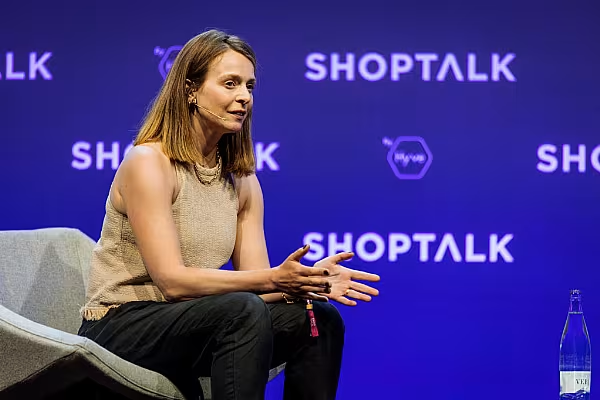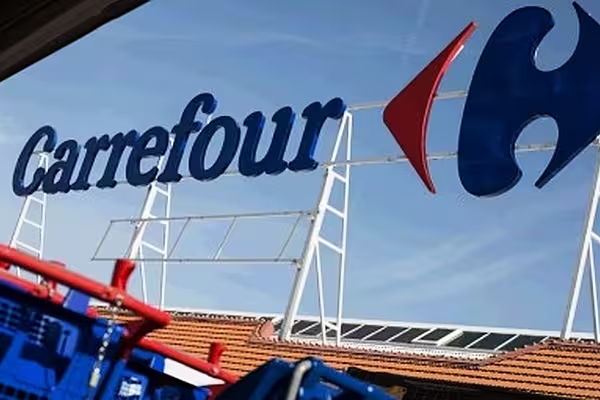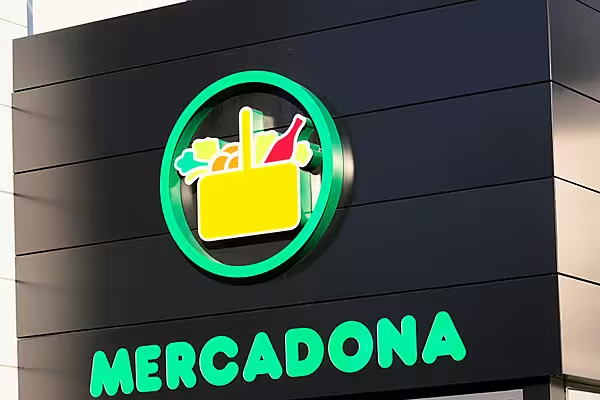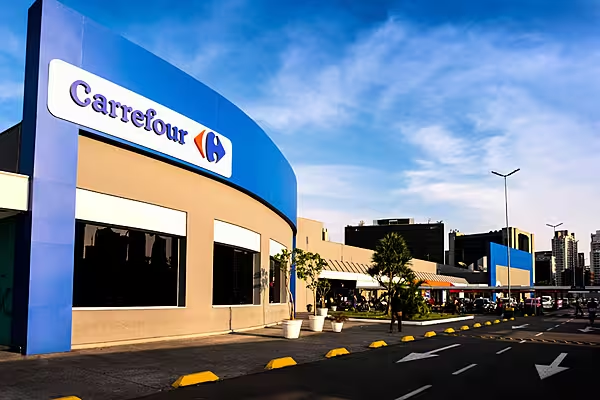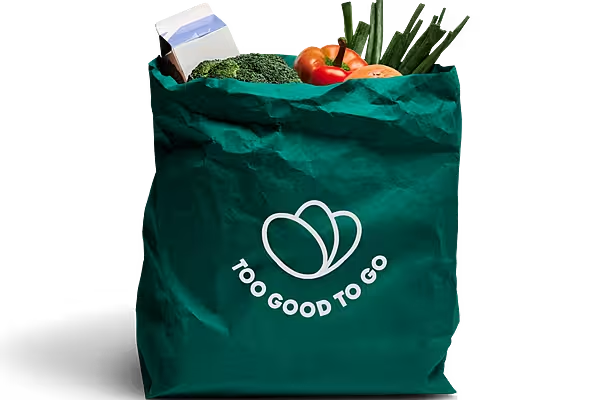Founded just over a decade ago, today Deliveroo is considered one of the world's leading food delivery platforms, with operations in ten markets and partnerships with around 180,000 restaurants, foodservice providers and, increasingly, retailers.
One of the group's fastest-growing ventures is its Deliveroo Hop operation, a ‘rapid-grocery-as-a-service’ model, launched in 2022, that has since partnered with retailers such as Waitrose and Morrisons in the UK, Carrefour and Esselunga in Italy, and Monoprix and Auchan in France.
At the recent Shoptalk Europe event in Barcelona, Suzy McClintock, VP, Grocery, Hop, Editions & Retail at Deliveroo outlined how the business is bring creative in recruiting its traditional restaurant-focused customer based to its nascent grocery operation.
ESM editor Stephen Wynne-Jones caught up with her.
ESM: While inflation is easing, consumers continue to face a cost-of-living crisis, yet their demand for convenience and efficiency has increased. For a business like Deliveroo Hop, how do you find a balance to be able to meet their needs?
Suzy McClintock: We have built a large on-demand grocery business that serves a clear customer need. Alongside the convenience and speed our customers value so highly, we are committed to delivering a great service at a fair price with both our grocery partners and via Hop.
We are consistently and actively promoting value, working with grocers to match in-store prices and are clearly labelling these items in the app. Hundreds of items are now actively price matched on Deliveroo across a number of our grocery partners, including Morrisons, Sainsbury's and Co-op, and we are improving our grocery-specific offer mechanics such as '% Off' and ‘Meal Deals’, and are planning to add even more by the end of the year.
We’ve also invested in price for our Deliveroo Hop service to bring customers great value every day. However, Hop’s key differentiator is its service levels.
Not getting everything that you’ve ordered is a key pain point for on-demand grocery and our Hop sites offer real-time availability, meaning that our customers get a complete order almost every time.
ESM: Deliveroo Hop was founded in 2021 at the height of the 'quick commerce' boom. Since then, that sector has seen a significant amount of attrition. From the outset, how did Deliveroo Hop seek to position itself differently?
Suzy McClintock: We launched Deliveroo Hop in 2021, using delivery-only sites in London to deliver grocery goods to customers, with sites that are both Deliveroo-operated stores and partner-operated Hop-as-a-Service. We took a strategic and gradual approach to launch, and launched our sites in areas where we know we have a substantial base of potential customers.
We see a key enabler to the growth of our grocery model being that it sits alongside our core offering – our customers can order from restaurants, the big grocers, retailers and Hop.
ESM: How does Deliveroo Hop's structural model differ from that of other operators?
Suzy McClintock: Deliveroo Hop is now live in the UK, Italy, France, UAE and Hong Kong. Whilst our model varies across markets, we primarily work in partnership with trusted retailers we know our customers love. This includes Waitrose and Morrisons in the UK, Carrefour and Esselunga in Italy, and Monoprix and Auchan in France.
This allows us to combine our customers' favourite branded and own-label products with the unparalleled levels of service our Hop model offers. In some markets, we supplement this with smaller brand partnerships where we think we can bring something new and exciting to our customers – for example, our Hop x Ann Summers partnership in the UK.
ESM: The rise of omnichannel retailing has meant that shoppers expect the same degree of service, quality, range etc regardless of the channel they choose to shop in. What opportunities does this present for Deliveroo Hop?
Suzy McClintock: Deliveroo Hop is ideally positioned to offer customers high levels of service alongside compelling ranges and excellent quality. Our dark store model combines the range and quality of loved grocery retailers with the operational rigour and high service levels of the dark store.
We have control over the proposition, giving us the freedom to design and build the proposition we know works best for Deliveroo’s customers.
Our model is highly agile and designed specifically to serve the on-demand convenience segment. We aren’t constrained by the limitations of the store model and continuously innovate and test new concepts to make sure we are the best we can be for our customers.
This presents huge opportunities for us – as we enter new areas and the on-demand market continues to evolve, we are able to highly tailor our proposition and quickly evolve our offering.
ESM: In what ways has Deliveroo Hop sought to improve its user experience?
Suzy McClintock: We are always looking at how we can improve our user experience, from our laser focus on our operational metrics to new and exciting innovations. Many of the user experience improvements tested on Hop are rolled out across the Deliveroo platform, and Hop acts as a testbed for innovation in the grocery user experience.
For example, as a result of testing on Hop, we redesigned our menu experience to help customers browse and discover products and promotions more easily, and have seen fantastic levels of conversion as a result.
Another example is our ‘top-up’ order experience, in which customers can add grocery items to their restaurant order and experience a whole new level of convenience. Both of these improvements were tested on Hop and have since been rolled out across grocery at Deliveroo.
ESM: Deliveroo Hop is working with retailers in France, Italy, the UK and Hong Kong. How do these partnerships come together – what are you looking for in a retail partner and vice versa?
Suzy McClintock: We look for partners who share our vision of creating the on-demand grocery store our consumers can’t live without. What this means is working with partners who are aligned with our vision of delivering exceptionally high service levels, high quality and market-leading ranges, and want to collaborate to make this happen.
For our partners, we bring the opportunity to reach new customers with a reliable and high-quality offer, alongside the opportunity to come on the journey with us, as we innovate to push the boundaries of what our Hop model can offer customers.
We’ve seen no shortage of interest in this space, it's all about finding the right fit to bring the partnership together.
ESM: What are your expansion targets at Deliveroo Hop? In terms of new markets, or retailer partnerships?
Suzy McClintock: There’s still a huge amount of unmet demand for the Hop model both in the UK and internationally. Whilst I can’t reveal exactly what comes next, we have a sustainable model that we know works and are confident in our ability to continue to grow.
We see further potential with our existing grocery partners and have some exciting deals in the pipeline to bring retail favourites to more Hop customers, including the expansion of our partnership with retailers. We’ve seen exciting growth on Hop over the last year and have launched new sites in the UK, Hong Kong and France.
More broadly, in our grocery business in the five years since we pioneered on-demand grocery, the business has grown significantly, and in the second half of 2023, represented 13% of total Gross Transaction Value (GTV) on the app, reaching an annual run-rate GTV of £1 billion in Q4.
This strong growth, despite the challenging consumer spending environment, gives us confidence in the strength of demand for the convenience of on-demand grocery and the growth runway ahead.
Ultimately, we’re really optimistic about the future and the opportunity for Deliveroo and our partners. We believe our approach is leading in the industry, and hard to replicate, and this gives us an edge.
